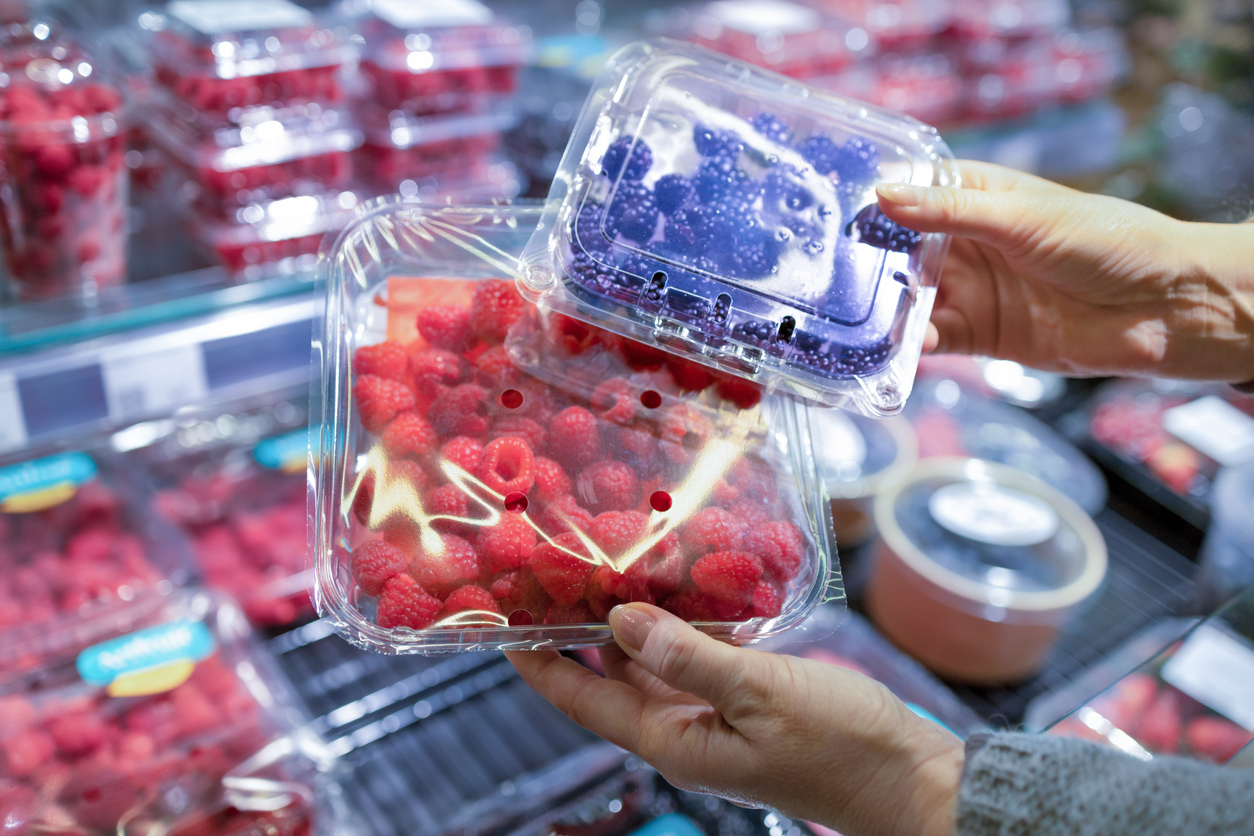Have you ever tried to pick a ripe raspberry? If you haven’t, it can be tricky. Too firm a pinch and the berry will turn into jam in your hand.
House Bill 1900 – relating to implementing strategies to achieve higher recycling rates within Washington’s existing solid waste management system – proposes to effectively eliminate single-use plastics. A similar bill was filed in the legislature last year but stalled in the Ways & Means Committee.
There are additional bills addressing the same topic: House Bill 2049/Senate Bill 6005 – relating to improving Washington’s solid waste management outcomes.
Some small differences between all the bills exist but there is one glaring similarity among them: none of them recognize the need for single-use plastic in food packaging and sales. Clam-shell packaging (see: the lidded containers in which berries are sold), perforated plastic bags for potatoes, lettuce, and grapes, shrink wrap around pre-cut and/or pre-seasoned vegetables and meat would all be considered unacceptable under both old and new iterations of the legislation.
Single-use food packaging materials provide essential functions for food items. Clam-shells offer protection to soft fruits by providing both a buffer from being handled directly and supplying appropriate volume-by-weight to preserve the fruit inside the container. If you’ve ever gotten to the bottom of a berry container and discovered the mashed fruit, imagine how much worse it would be if the fruit was stored in a bulk container.
Similarly, perforated plastic bags offer the air flow necessary to keep vegetables from spoiling too early and similar purchase-by-weight constraints as clam-shells.
Shrink wrap also provides for a critical need within our food packaging system: mitigating food waste. Shrink-wrapped items – melon halves, pre-cut and/or pre-seasoned produce and meat – cut down on overall food waste by utilizing produce that may have been partially damaged during shipping or making use of less trendy cuts of meat.
Making use of produce that is otherwise edible by cutting off a damaged portion or pre-packaging it in smaller quantities than would usually be available, grocers are offering a more cost-effective and accessible means for the elderly, low-income people, and struggling families to consume fresh produce and proteins. Single-use plastics have democratized fresh, local options for the consumers who need it most.
The new crop of plastic packaging bills also include a caveat: no requirements can violate U.S. Department of Agriculture or U.S. Food & Drug Administration rules. The trouble with the caveat is neither the USDA and FDA have firm rules in place. Both federal agencies recognize the need for regulatory flexibility as new technologies emerge. The FDA – the agency that governs food packaging – evaluates food packaging on a case-by-case basis rather than having firm, blanket regulations.
“FDA’s guidance documents, including this guidance, do not establish legally enforceable responsibilities. Instead, guidances describe our current thinking on a topic and should be viewed only as recommendations, unless specific regulatory or statutory requirements are cited. The use of the word should in FDA guidances means that something is suggested or recommended, but not required,” reads a portion of Use of Recycled Plastics in Food Packaging (Chemistry Considerations): Guidance for Industry. The reference to both the USDA and FDA in the new bills offer false assurances that the new regulations will not be beyond the scope of federal regulations, but federal regulations are ever evolving.
Rather than eliminating the use of plastics that offer critical food safety and access to affordable nutrition, encouraging the flexibility that even the FDA recognizes would yield more effective results. Preserving the benefit of single-use plastics for food packaging offers the best means by which to maintain an abundant and healthful food supply for all.





